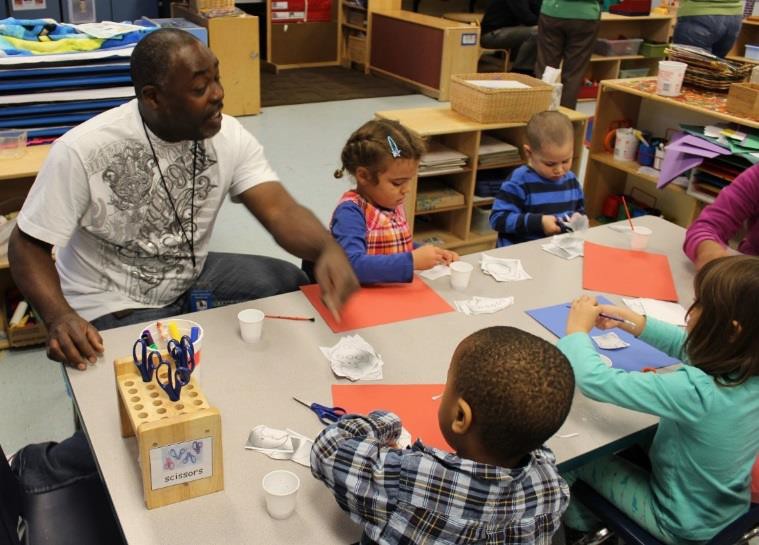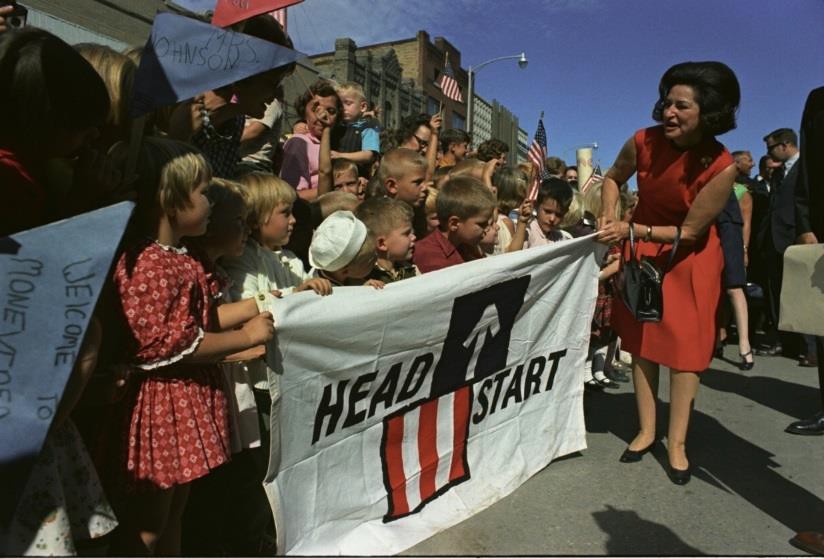61 Early Childhood Education
Providing universal preschool has become an important lobbying point for federal, state, and local leaders throughout our country. In his 2013 State of the Union address, President Obama called upon congress to provide high quality preschool for all children. He continued to support universal preschool in his legislative agenda, and in December 2014 the President convened state and local policymakers for the White House Summit on Early Education (White House Press Secretary, 2014).
However, universal preschool covering all four-year olds in the country would require significant funding. Further, how effective preschools are in preparing children for elementary school, and what constitutes high quality early childhood education have been debated.
To set criteria for designation as a high quality preschool, the National Association for the Education of Young Children (NAEYC) identifies 10 standards (NAEYC, 2016). These include:
- Positive relationships among all children and adults are promoted.
- A curriculum that supports learning and development in social, emotional, physical, language, and cognitive areas.
- Teaching approaches that are developmentally, culturally and linguistically appropriate.
- Assessment of children’s progress to provide information on learning and development.
- The health and nutrition of children are promoted, while they are protected from illness and injury.
- Teachers possess the educational qualifications, knowledge, and commitment to promote children’s learning.
- Collaborative relationships with families are established and maintained.
- Relationships with agencies and institutions in the children’s communities are established to support the program’s goals.
- The indoor and outdoor physical environments are safe and well-maintained.
- Leadership and management personnel are well qualified, effective, and maintain licensure status with the applicable state agency.
Parents should review preschool programs using the NAEYC criteria as a guide and template for asking questions that will assist them in choosing the best program for their child.

Selecting the right preschool is also difficult because there are so many types of preschools available. Zachry (2013) identified Montessori, Waldorf, Reggio Emilia, High Scope, Creative Curriculum and Bank Street as types of early childhood education programs that focus on children learning through discovery. Other early childcare options include the Ascend Curriculum, Educare, and Parent Cooperatives. While not an exhaustive list of all early childcare options, examining these programs gives us an idea of different approaches to early learning in a preschool or childcare setting. Teachers act as facilitators of children’s learning and development and create activities based on the child’s developmental level. The following tables and videos summarize key characteristics of these early childhood programs.[1]
|
Program |
Founder |
Characteristics |
|
Ascend Curriculum[2] |
Cadence Education |
|
Video describes the Ascend Curriculum and how it prepares students for elementary school.
|
Program |
Founder |
Characteristics |
|
Bank Street[3] |
Lucy Sprague Mitchell |
|
Video describes the Bank Street approach.
|
Program |
Founder |
Characteristics |
|
Creative Curriculum[4] |
Diane Trister Dodge |
|
In this video, Child Development Curriculum specialist Becky Sanchez outlines the Creative Curriculum approach.
|
Program |
Founder |
Characteristics |
|
Educare[5] |
Start Early & the Irving Harris Foundation |
|
Video celebrates 10 years of Educare, highlighting core characteristics of this approach to early childhood education.
|
Program |
Founder |
Characteristics |
|
High Scope[6] |
David Weikart |
|
Video describes the High Scope Approach.
|
Program |
Founder |
Characteristics |
|
Montessori[7] |
Dr. Maria Montessori |
|
Video briefly describes the history of Montessori schools and outlines key characteristics of the approach.
|
Program |
Founder |
Characteristics |
|
Parent Cooperative[8] |
|
|
Video offers an example of a parent cooperative.
|
Program |
Founder |
Characteristics |
|
Reggio Emilia[9] |
Loris Malaguzzi |
|
Video briefly describes the history of Reggio Emilia and outlines key characteristics of the approach.
|
Program |
Founder |
Characteristics |
|
Waldorf[10] |
Rudolf Steiner |
|
Video briefly describes the history of Waldorf schools and outlines key characteristics of the approach.
Head Start
For children who live in poverty, Head Start has been providing preschool education since 1965 when it was begun by President Lyndon Johnson as part of his war on poverty. It currently serves nearly one million children and annually costs approximately 7.5 billion dollars (United States Department of Health and Human Services, 2015). However, concerns about the effectiveness of Head Start have been ongoing since the program began. Armor (2015) reviewed existing research on Head Start and found there were no lasting gains, and the average child in Head Start had not learned more than children who did not receive preschool education.

A recent report dated July 2015 evaluating the effectiveness of Head Start comes from the What Works Clearinghouse. The What Works Clearinghouse identifies research that provides reliable evidence of the effectiveness of programs and practices in education, and is managed by the Institute of Education Services for the United States Department of Education. After reviewing 90 studies on the effectiveness of Head Start, only one study was deemed scientifically acceptable and this study showed disappointing results (Barshay, 2015). This study showed that 3- and 4-year-old children in Head Start received “potentially positive effects” on general reading achievement, but no noticeable effects on math achievement and social-emotional development.
Nonexperimental designs are a significant problem in determining the effectiveness of Head Start programs because a control group is needed to show group differences that would demonstrate educational benefits. Because of ethical reasons, low income children are usually provided with some type of pre-school programming in an alternative setting.
Additionally, Head Start programs are different depending on the location, and these differences include the length of the day or qualification of the teachers. Lastly, testing young children is difficult and strongly dependent on their language skills and comfort level with an evaluator (Barshay, 2015).[11]
Video celebrates Head Starts 50th anniversary, highlighting the history of the program.
- Child Growth and Development by Jennifer Paris, Antoinette Ricardo, & Dawn Rymond licensed under CC BY 4.0 (modified by Courtney Boise) ↵
- Written by Courtney Boise based on material from https://www.cadence-education.com/our-promise/curriculum/ ↵
- Gordon, A. M., & Browne, K. W. (2016). Beginning essentials in early childhood education. (3rd ed.). Cengage: Boston ↵
- Gordon, A. M., & Browne, K. W. (2016). Beginning essentials in early childhood education. (3rd ed.). Cengage: Boston ↵
- Written by Courtney Boise based on material from https://www.educareschools.org/what-we-do/practice/the-educare-model/ ↵
- Gordon, A. M., & Browne, K. W. (2016). Beginning essentials in early childhood education. (3rd ed.). Cengage: Boston ↵
- Gordon, A. M., & Browne, K. W. (2016). Beginning essentials in early childhood education. (3rd ed.). Cengage: Boston ↵
- Written by Courtney Boise based on material from https://www.preschools.coop/choosing-a-coopertative ↵
- Gordon, A. M., & Browne, K. W. (2016). Beginning essentials in early childhood education. (3rd ed.). Cengage: Boston ↵
- Gordon, A. M., & Browne, K. W. (2016). Beginning essentials in early childhood education. (3rd ed.). Cengage: Boston ↵
- Lifespan Development: A Psychological Perspective by Martha Lally and Suzanne Valentine-French is licensed under CC BY-NC-SA 3.0 (modified by Courtney Boise) ↵

